
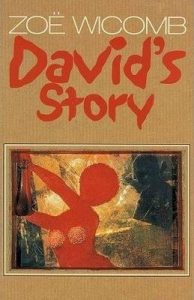
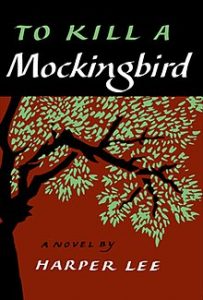
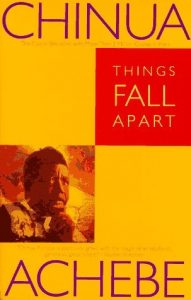
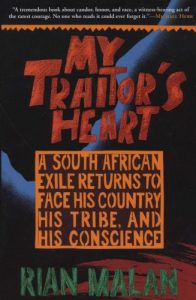
This is an an edited excerpt of a longer essay appearing in Panashe Chigumadzi’s forthcoming book, provisionally titled Beautiful Hair for a Landless People.
History through the body or Rights of Desire, Rights of Conquest
1.
David’s story started at the Cape with Eva/Krotoa, the first Khoi woman in the Dutch castle, the only section I have left out.
The David being referred to here is David Dirkse of Zoe Wicomb’s 2000 novel David’s Story, a 35-year-old former ANC intelligence agent, classified as ‘Coloured’ in apartheid nomenclature, and searching for his place in the soon-to-be-inaugurated New South Africa by investigating his Khoi and Griqua ancestry. But it is a statement perhaps more relevant to another David: David Lurie of JM Coetzee’s 1999 novel Disgrace, a 52-year-old former professor of modern languages, classified as ‘white’ in apartheid nomenclature, and searching for his place in the newly-inaugurated New South Africa by attempting to solve his ‘problem of sex’.
While Coetzee does not provide an epigraph for the story of his David, Wicomb, perhaps sensing this lack, provides one that will suffice for both: ‘O my body, make of me always a man who questions!’ This plea is the final line of Frantz Fanon’s Black Skin, White Masks. If it is true that, as David Attwell, literary scholar and long time defender of Coetzee, writes in his reflections on Dusklands (1974), ‘the body situates the self in history’, then Fanon’s plea both illuminates and erases much, by virtue of its masculinist framing. Questioning history through the body, I have since come to reframe it, to capture the marginal position of the colonised woman: ‘O my body, always make of me a woman who questions!’
I first read Disgrace when I was eighteen, not yet quite aware that David Lurie’s story began not in the ‘exotic’ Soraya’s room, but with Krotoa at the Dutch castle. There were many questions I knew I had, but was unable to face directly. And so I hated the book, wished it banned. I now return to it eight years later. My body now ready, able to face the questions it has of David’s story. What does the book have to say about the body of a black woman in South Africa? Or, if we try it another way: What questions does my body, the body of a black woman in South Africa, ask of David’s story?
2.
Early on in the novel, David Lurie, mediocre lecturer that he is, attempts in vain to contextualise a class reading of Book 6 of Wordsworth’s The Prelude for his students so: ‘We don’t have Alps in this country, but we have the Drakensberg, or on a smaller scale Table Mountain, which we climb in the wake of the poets, hoping for one of those revelatory, Wordsworthian moments we have all heard about.’
My first encounter with this story of David’s was in the Magoebaskloof valley at the very north-eastern tip of the Drakensberg. The Magoebaskloof valley is located near the R71 between Tzaneen and Polokwane. The latter is the capital of the Limpopo Province, formerly part of the Transvaal Colony, founded in 1886. Its former name, Pietersburg, was in honour of Voortrekker leader Petrus Jacobus Joubert. Relatively anonymous for years, our dorpie of a capital city was put on the map when it had the honour of hosting Jacob Zuma’s takeover of the ANC at the 2007 National Conference. It has also given the country one of its most important political figures in Economic Freedom Fighters President Julius Sello Malema, who grew up Polokwane’s main township, Seshego.
Twice a week, I and about sixty other teenagers travelled the sixty kilometres between Polokwane and our Magoebaskloof boarding school, Stanford Lake College. When you take this trip, you begin to understand spatial apartheid. It is dry, arid and densely populated for the first forty kilometres. On either side of the road are peri-urban locations such as Nobody and Turfloop and landmark institutions such as Mankweng Hospital and the University of Limpopo (formerly the University of the North). Although the speed limit is a slow sixty kilometres per hour, you should take care, for there are errant dogs, goats and cattle on the road. As you approach the base of the Magoebaskloof, to your right you will see the grounds of Moria, the headquarters of the two branches of the Zion Christian Church (ZCC), the largest Africanist church in Southern Africa. During the Easter pilgrimage the grounds of the century-old church tremble under the feet, buses and cars of the millions-strong throng of worshippers who attend from all over the South Africa, and as far as Zimbabwe, Zambia, Swaziland, Lesotho and Botswana. As you proceed higher and higher, you will likely notice a significant dip in the temperature. Once you have ascended into ‘The Land of Silver Mist’, a green oasis of lush woodlands, natural forests, plantations, waterfalls and dams emerges; no longer the RDP-dotted dry Limpopo bushveld, but a land of hiking trails, nurseries, pubs, lodges and bed-and-breakfasts. Passing several khaki-clad ZCC followers collecting or selling holy water on your left, you will see on your right the settlement of Haenertsburg. This quaint town often invites comparisons to a Swiss or English village; for those less nostalgic for the metropolitan, it is reminiscent of Pilgrim’s Rest in Mpumalanga, another former gold-mining town, whose corrugated iron trading-post buildings and gravel roads mark it as a major tourist attraction.
The bucolic scenes of Haenertsburg lend themselves to a certain kind of colonial nostalgia. However, unlike other landscapes in South Africa, the picturesque topography ensures that colonial writers need not strain, as Coetzee writes in White Writing (1988), if they are to ‘continually point to differences between the landscapes of Africa and England’. Writers, such as Scottish author and colonial administrator Sir John Buchan, could describe it as ‘earthly paradise’ that looks and feels ‘just like Scotland’.
This ‘earthly paradise’ in Africa is deceptively calm and peaceful. But, if you listen, really listen, there is a body that forces you to question its apparent serenity. A bronze bust of King Makgoba—the leader of the indigenous Tlou people, a man who was subject to the kind of torture that could easily have been ordered by Colonel Joll in Waiting for the Barbarians (1980)—stands in the historic Magoebaskloof Hotel gardens. He looks down ominously onto the Letaba River valley, the very scene of the wars of conquest that pitted the Tlou against the settlers. Indeed the bust, which is said to be based on a photograph of the king’s decapitated head, could be considered a kind of trophy, memorialising the victorious hunt for the ‘Lion of the Wood Bush’. The bronze aside, Makgoba’s other consolation is one normally denied the conquered, the sardonic gift of naming rights: Magoebaskloof means ‘Makgoba’s valley’.
If you forgo the opportunity for a selfie that his regal bust seems to propose, the dismembered body of King Makgoba reveals much about the conflict between the indigenous people and white settlers, which mounted steadily in the area from the eighteen-seventies. It reached a point of crisis during the 1887 gold rush and the subsequent move by the settler authorities to demarcate farms in King Makgoba’s territory. Like the renowned rainmaker Queen Modjadji, residing further down in the area now known as Modjadjiskloof, King Makgoba resisted the land grabs and tax levies imposed by settler authorities. Despite there not being much gold in the area, the battle culminated in Makgoba’s death in 1895, under the orders of Boer commander Abel Erasmus. Buchan (who was seemingly unable to get his tongue around the already bastardised ‘Magoeba’ and thus corrupted it further to Machubi) wrote the following of his death:
Machubi was a Kaffir chief with whom the Boers waged one of their many and most inglorious little wars. When his people were scattered he took refuge in the thick forest at the head of the river which bears his name. After my experience of that kind of forest I do not wonder that the Boers preferred not to fight a hand-to-hand battle in its tangled depths. So, after their fashion, they hired an impi of Swazis, who sat around the wood for three weeks, and ultimately slew the chief—not, however, before he had accounted in single-handed combat for three of his enemies. Mr Altenroxel possesses the old warrior’s skull, which, except for the great thickness at the crown of the head, is finely shaped, and all but Caucasian in its lines.
This account of King Makgoba’s beheading is, however, contradicted by his followers, who hold that he committed suicide before the Swatis found him.
An uneasy ‘peace’ followed this conquest. Resistance by the ‘barbarians’ of Magoebaskloof before Makgoba’s fall and the spread of the militant Africanist Ethiopian and Zionist movements, resulting in the establishment of churches such as the ZCC, led to fears of the kind of uprisings thwarted in the story of yet another David. Buchan’s most famous work set in Magoebaskloof, Prester John, tells the tale of a young Scotsman, David Crawfurd, who valiantly fights against the resistance led by John Laputa, a Zulu minister, who has taken the title of the legendary Christian king of Ethiopia, Prester John.
Liberal as my alma mater was, the history of our valley’s wars of conquest still escaped this narrative. Stanford Lake College is a private boarding school that was established after the fall of apartheid by parents who did not want to have to send their children all the way to the St Mary’s and St John’s of the world. In the ‘uneasy peace’ of the New South Africa our relatively young school looked away from the true spectre of Makgoba’s head and ‘forward’, with a decidedly liberal cosmopolitanism that manifested itself in multifaith school assemblies, international exchange programmes, an extensive outdoor ‘adventure’ programme (including archery, mountain-biking in the surrounding forests, wall climbing and kayaking in the nearby lake). We wore a blue-and-green tartan skirt for girls and a school badge, chosen by the female head of board of directors, which was derived from an African symbol illustrated in sanusi Vusamazulu Credo Mutwa’s Indaba, My Children, but also mirroring the ‘ethnic Y-front’ of the New South African flag.
Big and small things revealed the school’s New South Africa contradictions. It goes without saying that in my time all the teachers (save for two exceptions) were white, and that the majority of students were white. So we can skip over that and talk about the kind of slips involved in the example of our annual grade eight ‘trek’ up the Iron Crown mountain, undertaken in preparation for the following year’s five-day ‘trek’ retracing part of the route taken by Voortrekker Louis Tregardt in the Zoutpansberg mountains. Predictably, we didn’t know much of Tregardt’s history beyond the fact that he had given his name to the nearby town of Louis Trichardt, which was recently renamed Makhado, after the VhaVhenda King. We did not ask much of this Tregardt, who might have found a kindred spirit in the adventurist frontiersman Jacobus Coetzee in Dusklands (1974), having led a group of Voortrekkers in 1835 from the Cape Colony to the interior of South Africa, ‘opening up the way’—read displacing the VhaVhenda in the area—to the Transvaal and Portuguese East Africa (now Mozambique). There was no apparent sense of irony in the partial re-enactment of a migration driven by less than noble motivations. Who knows what the conversation might have been like had we discussed the words of Anna Steenkamp, the niece of Tregardt’s counterpart Piet Retief, as she expressed the views of the Boers who left in protest of the British prohibition of slaveholding and potential promulgation of a constitution promising ‘equal rights for all civilised men’:
… [a]nd yet it is not so much their freedom which drove us to such lengths, as their being placed on an equal footing with Christians, contrary to the laws of God, and the natural distinction of race and colour, so that it was intolerable for any decent Christian to bow down beneath such a yoke; wherefore we rather withdrew in order thus to preserve our doctrines in purity [quoted in Part of My Soul Went With Him, by Winnie Mandela and edited by Mary Benson and Anne Benjamin, 1984].
It is into this cauldron of silences that our multiracial group of ‘bornfrees’ was dropped. Black pupils like myself and my younger brother were the children of middle class professionals, local businessmen and women, senior officials in local government, grandchildren of Hosi Nwamitwa, grandchildren of the governor of the former non-independent bantustan Gazankulu, and the relations of the late Peter Mokaba, the firebrand former ANC Youth League leader of ‘Kill the Boer’ fame. White pupils were the children of owners and managers of farms, agro-processing plants, game hunting concerns, lodges, labour broking firms and freight businesses. Although there was a small contingent of both black and white students from as far away as Zimbabwe and Botswana, the majority were white. Of the South Africans, many had ‘been in the area’ for generations, descendants of the ‘pioneers’ and ‘trekboers’ who had staked out their claims. Few had parents involved in local politics, although one notable exception was the grandson of Hendrik Verwoerd, one of my younger brother’s good friends.
This experiment, if you will, meant that most of us had been friends since primary school, some as far back as preschool. Initial signs of success were evidenced by the fact that we had homeworked, hung out, partied and slept over at each other’s houses, plots and farms for years (although this often involved ignoring colour-conscious dogs, racist grandparents and occasionally bigoted parents). Over time, our friendships began to fracture and strain due the pressures of the realities around us. Though we remained friendly, the invitations were no longer as forthcoming; gone was the innocence about the world around us and our place in it.
By 2009, our final year of high school, some conversations were particularly strained, if not avoided altogether. The ‘land issue’ was, of course, one of them. Talk of land reform was not of the idle or abstract ideological kind. Zimbabwe ‘had happened’ or ‘was happening’. South Africa, in some ways, was ‘happening’. Land claims were being lodged and contested within our region. Some owners began to sell off voluntarily, buying small businesses in town and in and around Magoebaskloof; one or two families emigrated to Australia and New Zealand. Two-way radios and evening patrols were the order of the day for those who, to use the words of David Lurie, ‘stayed on’. You could never be too vigilant. In the first week we arrived at school, for example, one of the girls had abruptly left the hostel. We later found out that her parents had been murdered in their beds. With this as our context, the relatively unsophisticated nature of our arguments seemed directly proportionate to the heat they generated: It’s not fair. It wasn’t fair to us either. My family has been here for generations. Who was there before? The bushmen. Do you wanna end up like Zim? What will you do with the land? Whatever the hell we want it, it was ours. Kill the—, Kill the—.
It was against this backdrop that Disgrace was set before us, eighteen-year-old ‘bornfrees’, only just beginning to grapple with the implications of a history that had produced an uneasy peace in the mountains and valleys around. We read Disgrace in the same year in which our first and last setwork by a black author was prescribed: Chinua Achebe’s Things Fall Apart. The previous year it had been William Golding’s Lord of the Flies, Paul Theroux’s The Mosquito Coast and Harper Lee’s To Kill a Mockingbird. I don’t recall much of the experience of reading the first two books; they were simply prescribed texts that presented interesting thought experiments with no real bearing on our lives and interactions with each other. You either liked them or you didn’t. Either way, no one was going to look at you any differently.
To Kill a Mockingbird, however, was different. It forced us into our first real inquiry into our racialised history, by way of the American South. Our Rainbow Nation classroom, squeamish about the dreaded ‘N-word’, attempted to talk through the generalities of settler-colonial racial prejudice, albeit from the safe distance of Jim Crow America. A distance further reinforced by the fact that we did not face the body of Emmett Till. If we had, what questions would Emmett Till’s body have demanded of us? Would it have demanded questions of the Black Rapist Myth that had mutilated it? But even with this historically impaired prism, there was enough to create palpable tension: black students felt angry and white students felt guilty. In time, the book proved apt for our Rainbow Nation classroom: the tension was eased away and absorbed by the liberal sentimentality afforded by white patriarch Atticus Finch’s moral forthrightness in defending the poor black man falsely accused by a poor white girl from the racist ‘white trash’ family. Without any inclination towards the ‘anti-sentimental’ Go Set A Watchman, we could indulge in Lee’s great gift: black and white, we could all read To Kill a Mockingbird and come out feeling all right, if not optimistic, about each other and the world.
The next two prescribed texts, on the other hand, did not quite promise a rainbow at the end of the storm. Achebe’s Okonkwo brought home the reality of colonialism on the continent in a less abstract way. The figure of Okonkwo hanging lifeless from the branch of a tree demanded questions about the psychological and cultural dehumanisation of colonialism. Sure, we knew we had been colonised and that it was a long time ago, but how many of us had ever really thought in a meaningful way about the First Contact and what that might have done to our families? How would we have responded? Would we have been defiant like Okonkwo or would we have ‘sold out’ like his son Nwoye-Isaac? Was there an in-between? For many black students the book was an awakening of sorts to the cultural alienation of our ancestors, brought on by the ancestors of our classmates. This understanding of the extent of our cultural alienation was only reinforced by the liberal slips shown during the readings: ranging from our teacher’s advice that we didn’t ‘have to remember their names’, to my classmates’ exclamations of how ‘barbaric!’ and ‘superstitious!’ these natives’ actions and beliefs were. After Things Fall Apart, we couldn’t quite look at each other the same way, but it was a manageable discomfort. After all, it was ‘over there’ in Nigeria, over a hundred years ‘back then’, so it was still safely distant enough.
Disgrace presented something more destabilising for our group of ‘bornfrees’: a history located on our soil, in our times. Disgrace was ‘right here’, ‘right now’. It started off easily enough, although there was some excitement in the classroom as we began David’s story in the bedroom of an ‘exotic’ escort. The charge intensified as we felt the sense of being treated like the young adults we were, being let in on an affair between an aging professor and his impressionable student. David’s retreat to his ‘New Age’ ‘frontier farmer’ daughter’s piece of land in ‘old Kaffraria’ did not portend too much. The scenes were familiar enough, the only thing unusual for our adolescent class was his daughter Lucy’s sexuality, specifically her relationship with Helen. All proceeded well enough until three unknown black men arrived on their doorstep. The atmosphere changed. This is South Africa: we knew that danger loomed. In the aftermath of the intrusion, a charged silence coalesced around Lucy’s body.
In that silence Lucy Lurie’s defiled body rose and loomed large over all of us, standing as testament to The Swart Gevaar (the ‘black menace’). And in that silence, the only words that seem to matter were David Lurie’s: Lucy’s body was ‘the price one has to pay for staying on’. In the shadow cast by Lucy’s body, there was no real space to talk of Melanie, or Soraya for that matter. In that shadow, there was only really space for the sense of siege my white peers, descendants of the Erasmuses and Tregardts of our region, had increasingly felt in Makgoba’s valley to grow and suffocate everything else. Lucy’s body in David’s story silenced us. And in that silence we all agreed that David’s story was ‘too close to home’ for all concerned.
It was in that silence that I patched together a term essay about catharsis and that memorable first line: ‘For a man of his age, fifty-two, divorced, he has, to his mind, solved the problem of sex rather well.’ It was not, I must say, a penetrating essay. It was free of any considerations of power, of history, of empire, of race. It was a decidedly oblique ‘feminist’ ‘thesis’ on sexism, along the lines of a vain old man no longer entitled to beautiful young bodies and now, having suffered the rape of his daughter, ‘able’ to sleep with unattractive women his age. It was enough to get a reasonable mark that wouldn’t lower my average too much. More importantly, it was enough to be rid of David Lurie.
3.
Despite my best efforts, I found myself returning to David’s Problem of Sex earlier this year, in the aftermath of the incident in which a white man physically threatened a black woman in public over a fight between their children, ‘staged’ most appropriately at that ode to transnational settler-colonial frontier fantasy, a Spur family restaurant. This incident, which went viral on social media, opened up a space for black women to speak about their fear of white men in public and private settings. We have all been taught to fear black men, and have organised society around that fear. Toxic black masculinities this, toxic black masculinities that. The long shadow cast over our fear of the black male phallus meant that we never we never really speak about white men. The ‘Spur incident’, however, was the latest in a recent series of viral moments in which white men humiliate black bodies: white boys forcing black workers to eat food laced with urine and faeces because they thought it was funny; a white man beating a black domestic worker on her way to work in the suburbs because he thought she was a sex worker; a white man verbally abusing and throwing water at a fellow gym-goer—a black woman—because he thought she was too enthusiastic about her workout.
It prompted me to think and write publicly of the fear that I feel upon seeing a group of young white men, not quite sure what kind of ritual I may become the subject of that day. A fear reinforced by the fact that there are hardly ever any real consequences for white men behaving badly. A fear reinforced by the fact that my black womanhood cannot possibly be defended and weaponised in the ways in which white womanhood has been in the past and is in the present. In short, my black female body cannot mobilise much in the way of meaningful protection, and so I have learnt to cross the street quickly, because I know I am fair game in the hierarchy of bodies. Having learnt to live with this fear, the Spur incident left me wanting to ask: White Man, what is about my body that you hate so much? What do I represent that you must denigrate it so?
We dare not question white men about their actions. Even if I had, it was unlikely that I would get anything meaningful in return. I knew I had to find the answer for myself. It would be something to do with power, I knew that much, but I couldn’t quite put my finger on it. In the aftermath of this umpteenth white man (publicly) behaving badly I happened to think of David Lurie. Informed enough to now know that rape is not about sex but about power, I began to think about what the connections between David Lurie and the Spur man could be. In searching for answers, if there was any place to start it was the problem that introduced us to David Lurie: his Problem of Sex.
Throughout what could be described as Coetzee’s frontier novels: Dusklands (1974), In the Heart of the Country (1977), Waiting for the Barbarians (1980) and Disgrace (1999), there lies, in one manifestation or another, a Problem of Sex. In each of the four, an older white patriarch attempts to resolve his Problem of Sex through sexual relations with a black woman. But before we reduce David’s Problem of Sex to the erotic pursuits of aging white males in the colony, this passage in Rian Malan’s memoir, My Traitor’s Heart, points us to the ways in which white teenage boys have often used black female bodies:
After practice I set off on foot down to Abbotswold Road, swept along by a gang of jeering, sniggering teenage boys. Whenever I stopped, they joshed and jeered so I had to keep going. We came to a big white house. My mates decamped outside under a streetlight and I slunk down the dark alley that led to the servants quarters, moving on tiptoe because what I was about to do was unlawful.
I tapped an iron door and the black woman opened it, wearing a satin nightgown. A candle was burning in the room behind her. The cement floor was bare, the walls adorned by a picture of blond Jesus, his blue eyes spaniel with compassion. A lace covered table stood at her bedside, and on it a mirror, some cheap trinkets and a bottle of skin-lightening cream.The room smelled of all the things I associated with servants–red floor polish, putu, and Lifebuoy soap. Even her bed was waist-high on bricks to thwart the tokoloshe. I took off my clothes and clambered onto it and then I was in her arms, overpowered by the smell of her, and terrified, utterly terrified. I couldn’t talk to her because we had few words in common. I didn’t know what to do. I recoiled at the thought of French-kissing her, but I did it anyway because I was a social democrat and I did not want to insult her. And then I pulled up the nightie and like instants later it was over. I rolled off and asked, ‘Was I good? Am I big enough?’ She said yes.
She was very kind.
Drawing on this passage in her 2015 Ruth First Memorial Lecture, which interrogates interracial friendship in the post-apartheid era, Sisonke Msimang pushes through the silences and erasures in Malan’s account to bring to the fore an important question the black woman’s body demands we face: Was her version of the story punctuated with laughter or with tears? In addition to this, I have a question of my own: How many times has this scene been repeated in South African back yards? Msimang provides the answer: ‘The rituals of white male bonding in South Africa have historically involved laughing at and then violating black bodies bodies.’ In Malan’s story, he goes on to ‘casually mention that I had taken a black lover. My chinas were impressed. This was truly staggering defiance of the rock spider tyranny. I sat there smiling modestly, praying that no one would ask her name. I did not know it, you see.’
Malan has told his story. Now we must ask, what story would this nameless black woman have told of her encounter with this white man? In attempting to answer this I think of black women whose names we have been fortunate to know: Krotoa; Sarah Baartman; Sally Hemings; Mavis; Niki, the Madonna of Excelsior; Jezile Majola. I think of Melanie Isaacs, David Lurie’s student. Of Melanie, I do not know much. I only have David’s story to go by. Here is a disturbing account of one of his liaisons with the apparently passive Melanie:
He has given her no warning; she is too surprised to resist the intruder who thrusts himself upon her. When he takes her in his arms, her limbs crumple like a marionette’s. Words heavy as clubs thud into the delicate whorl of her ear. ‘No, not now!’ she says, struggling. ‘My cousin will be back!’
But nothing will stop him. He carries her to the bedroom, brushes the absurd slippers, kisses her feet, astonished by the feeling she evokes. […]
She does not resist. All she does is avert herself—avert her lips, avert her eyes. She lets him lay her out on the bed and undress her: she even helps him, raising her arms and then her hips. Little shivers of cold run through her; as soon as she is bare, she slips under the quilted counterpane like a mole burrowing, and turns her back on him.
Elsewhere David is described as ‘peeling off her clothes, while her arms flop like the arms of a dead person’. I imagine that if I had to question Malan on his own intrusion of a black woman’s space and body, he might offer a rationalisation similar to the one given by David after he had forced himself on Melanie: ‘Not rape, not quite that, but undesired nevertheless, undesired to the core. As though she has decided to go slack, die within herself for the duration, like a rabbit when the jaws of the fox close on its neck.’
What is rape if it is not sex undesired? Malan’s story does not tell us whether or not the black woman desired him. If Malan cared not to ask this black woman’s name, how do we expect him to have asked if she did indeed desire him? The only questions Malan does care to ask the nameless black woman, after intruding into her room much in the same way that David intrudes upon Melanie, are these: ‘Was I good? Am I big enough?’
Malan’s questions about his body—his seeking of phallic affirmation through the body of this nameless black woman—betray more than garden-variety male teenage anxiety, and point to something more disturbing than that. I would like to suggest that what David Lurie and Malan do ‘here in Africa’, in seeking answers to the Problem of Sex, is perhaps a crude perversion of the ‘gestures of belonging’ that Bessie Head refers to in the final paragraph of her second novel, A Question of Power:
It was quite the opposite in Africa. There was no direct push against those rigid, false social systems of class and caste. She had fallen from the very beginning into the warm embrace of the brotherhood of man, because when a people wanted everyone to be ordinary it was just another way of saying man loved man. As she fell asleep, she placed one soft hand over her land. It was a gesture of belonging.
David Lurie and Malan present us, then, with phallic gestures of belonging. For David Lurie and Malan, the inheritors of Enlightenment values that do not define the self through ethical and reciprocal relations with others, but rather through the cogito of the Cartesian individual, this black woman’s body, this black woman’s land, represents something more: a Question of Power. And so in the phallic pursuit of Power, the question of a black woman’s desire is ultimately a moot one: her undesire is outweighed by what David Lurie describes as his ‘rights of desire’. David, during his sexual harassment trial, privately engages poetry for his absolution, saying: ‘I was a servant of Eros […] It was a god who acted through me.’ To get to the point: for these white men, servants of Eros that they are, the Rights of Desire are god-given.
In the history of Empire, there are god-given rights, and then there are God-given rights. The one that most definitely shaped the history of the modern world was the Divine Right of Conquest. The right of a conqueror to territory taken by force of arms provided the theological-legal basis for the Crusades against the infidels in Europe and, later, the conquest of indigenous people in the New World.
From First Contact, Krotoa’s people questioned the Right of Conquest. When Jan van Riebeeck, the first European to establish a base in Cape Town in 1652, demanded that the indigenous Khoi reduce their cattle to ensure that there was enough land for the settlers’ pastures, Khoi leader Doman is said to have asked of him: ‘Who then, with the greatest degree of justice should give way to land, the natural owner, or the foreign invader?’
He added:
If we [Africans], were to come to Europe; would we be permitted to act in similar manner you act here? It would not matter if you stayed at the ‘provision station’ [at Table Mountain on your way to Asia for trade in spices], but you come out here to the interior. You select the best land for yourselves. You never ask us even once whether we like it or not, or whether it will disadvantage us.
Doman and his people had no choice but to enter into the KhoiKhoi-Dutch wars, the first of the colonial conflicts of conquest in what would become South Africa. After successive wars of dispossession fought from the Cape to the Transvaal by the likes of Hintsa, Mmanthatisi, Moshoeshoe, Sekhukhune, Modjadji and Makgoba, the unjust Right of Conquest would be enforced through legislation such as the Glen Grey Act of 1894, the 1913 Natives Land Act, and the 1950 Group Areas Act. By 1948, the official entrenchment of apartheid saw the preamble to the South African Constitution reaffirm the divine nature of the right: addressing ‘Almighty God’ who ‘has guided [our forebears] from generation to generation; who has wondrously delivered them from the dangers that beset them’ and who ‘gathered’ their ‘forebears together from many lands and gave them this their own’. The Right of Conquest, as philosophers such as Mogobe Ramose argue, has yet to be overturned in our post-apartheid constitutional law-making.
If David’s story begins with Krotoa, the first Khoi woman at the Dutch castle in the Cape, we are forced to ask: What binds the Right of Conquest and the Right of Desire? The answer: The Right to bodies (of land and of women) by phallic force. If, in both colonial and anti-colonial masculinist rhetoric, rape is a (tired) trope that creates bodies of land and bodies of women as interchangeable sites of conquest, then Rights of Conquest and Rights of Desire are one and then same law, enforced by guns and phalluses. Within this settler colonial logic, what then does David’s story have to say about my body, the body of a black woman in South Africa?
Dusklands‘s Jacobus Coetzee provides an answer that constructs our bodies, black women’s bodies, as passive, in a manner that tellingly invokes the terra nullius principle used to justify conquest of ‘uninhabited’ land on the frontier:
Most frontiersmen have had experience of Bushman girls. They can be said to spoil one for one’s own kind. Dutch girls carry an aura of property with them. They are first of all property themselves: they bring not only so many pounds of white flesh but also many Morgen of land and so many head of cattle and so many servants, and then an army of fathers and mothers and brothers and sisters. You lose your freedom. By connecting yourself to the girl you connect yourself into a system of property relationships. Whereas a wild Bushman girl is tied to nothing, literally nothing. She may be alive but she is as good as dead. She has seen you kill the men who represented power to her, she has seen them shot down like dogs. You have become Power itself now and she nothing, a rag you wipe yourself on and throw away. She is completely disposable. She is something for nothing, free. She can kick and scream but she knows she is lost. That is the freedom she offers, the freedom of the abandoned. She has no attachments, not even the well-known attachment to life. She has given up the ghost, she is flooded in its stead with your will. Her response to you is absolutely congruent with your will. She is the ultimate love you have borne your own desires alienated in a foreign body and pegged out waiting for your pleasure.
In classic Hegelian logic, Jacobus Coetzee makes it clear: The black female body is a Question of Power that must be answered through Conquest. Put another way, the white phallus affirms itself through the negation black female bodies and becomes ‘Power itself’, the resolution to David’s Problem of Sex. The story of Empire, then, is that of white male desire and the problems it poses for the world: phallic gestures of belonging in foreign bodies of land and women. The end of white rule, that is end of the Rights of Conquest and Desire, from Atticus Finch’s Jim Crow America to David Lurie’s post-apartheid South Africa, is the conquest of white women by men of color. In this contest of phallic power, the bodies of Melanie and Lucy are merely collateral damage.
- Panashe Chigumadzi is an award-winning novelist and essayist, and founding editor of Vanguard Magazine. Follow her on Twitter.

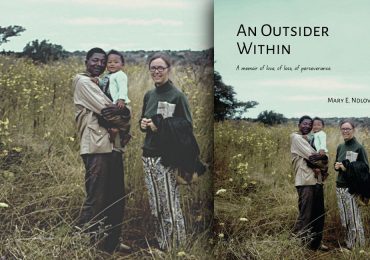

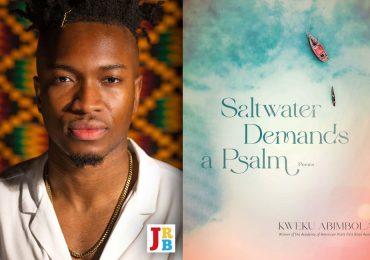
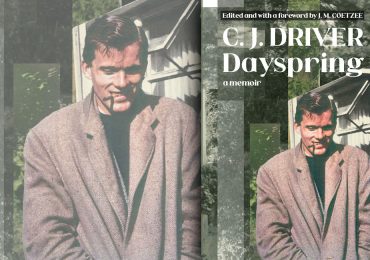
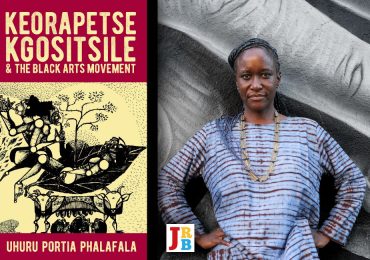
“What is rape if it is not sex undesired? Malan’s story does not tell us whether or not the black woman desired him. If Malan cared not to ask this black woman’s name, how do we expect him to have asked if she did indeed desire him?”
This is untrue. The story not only tells us that the woman desired him but explicitly states that it was in fact she who initiated the sexual encounter:
“One night, a black woman among the dancers took a liking to me. She came and stood right in front of me, bumping and grinding drunkenly. She was wearing her maid’s uniform, a plain blue housedress, and a headscarf known as a doek. She had a generous behind and thighs like tree-trunks, and seemed very old indeed–at least twenty-five if not older. When we took a smoke break Ivan’s gardener came over to say, “That woman, she wants the big one.” That was me. ”
(from from the Vintage edition of My Traitor’s Heart published in 1991. pg 59)
The troubling questions that underlie this piece (about the insidious ways that power contaminates sexual desire, about the racialization of sexuality in colonial societies) all deserve careful, conscientious and prolonged dissection. What they do not deserve is misrepresentation.